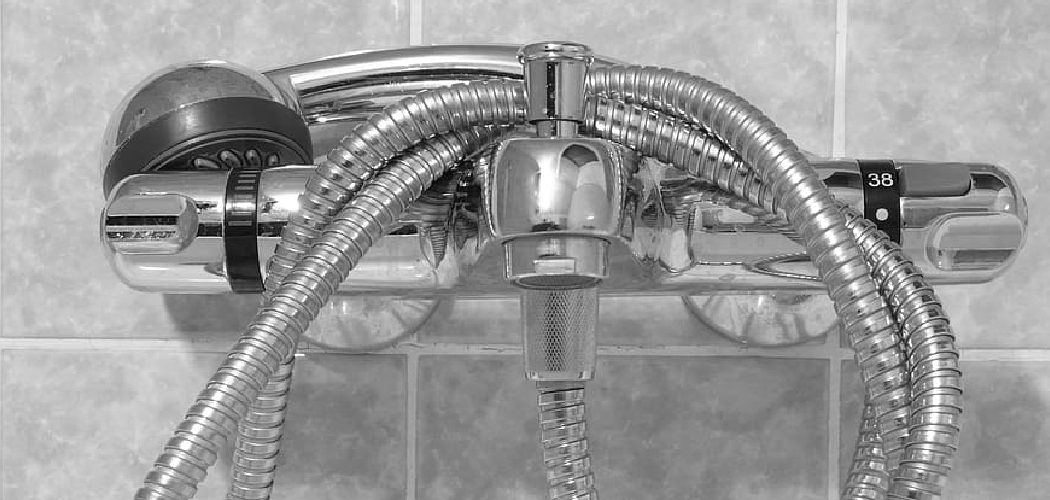Showering is an essential part of our daily routines, but what do you do when the power goes out? Whether it’s due to a natural disaster or a scheduled outage, there may come a time when you need to shower without electricity. But don’t worry; with the right preparation and some creative thinking, you can still have a refreshing shower, even without power. Here are some tips for how to shower without electricity.
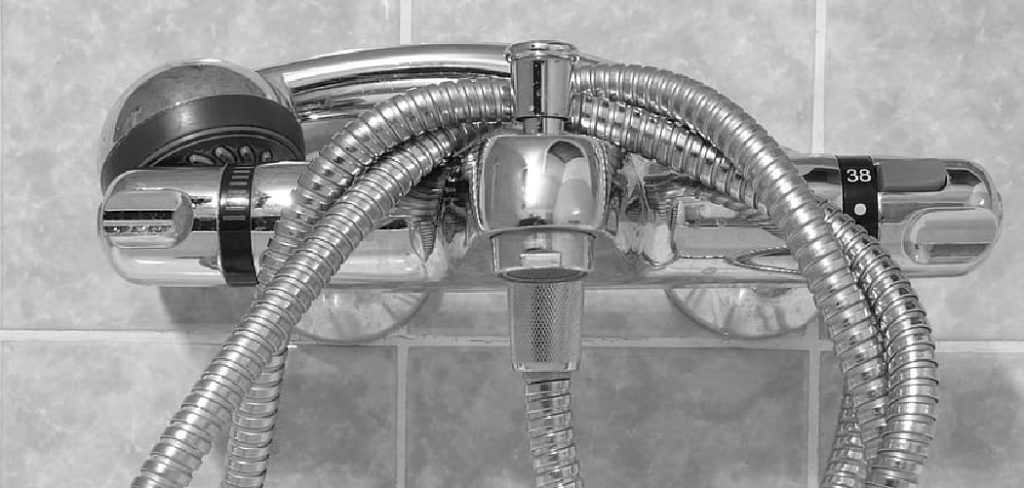
Necessary Items
To shower without electricity, there are a few essential items that you will need:
- Water: This can be from a stored supply or from natural sources like lakes or rivers.
- Bucket: A large bucket or container is necessary for holding the water and pouring it over yourself.
- Soap and Shampoo: Don’t forget to bring these along for a proper cleaning.
- Towel: Make sure to have a clean towel ready for when you’re finished with your shower.
- Flashlight or Lantern: In case the power goes out at night, having a light source will be helpful.
12 Steps on How to Shower Without Electricity
Step 1: Gather Supplies
Before the power goes out, it’s important to gather all the supplies you’ll need for your shower. This includes a bucket or large container, water, soap, shampoo, towels, and any other toiletries you typically use. If you have a solar-powered lantern or flashlight, make sure it’s charged and ready to use. It’s also a good idea to have a spare set of clothes nearby in case your current ones get wet.
Step 2: Fill the Bucket
Fill your bucket or large container with the desired amount of water. If you’re using natural sources like lakes or rivers, make sure to purify the water first before using it for your shower. As a general rule, you’ll need about 2-3 gallons of water for a full shower.
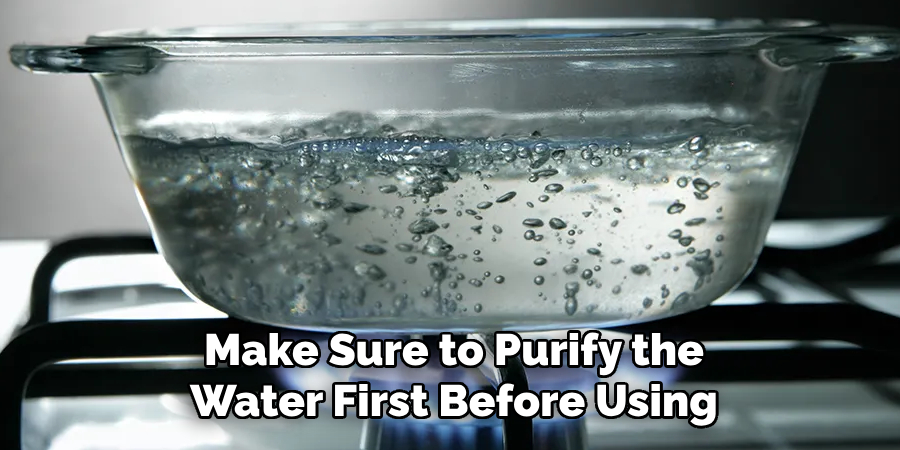
Step 3: Find a Suitable Location
You’ll need to find a suitable location for your makeshift shower. This can be in your bathroom, backyard, or even a designated shower area if you’re staying at a campsite or shelter. Make sure the ground is flat and stable and that there is enough space for you to comfortably shower.
Step 4: Set Up Your Shower Area
Set up your bucket or container in the designated location. If possible, elevate it on a stool or platform so that water can easily flow out and down below. Place your toiletries nearby for easy access.
Step 5: Undress
Take off your clothes and place them in a dry spot away from the shower area. If you’re worried about getting cold, wrap yourself in a towel or robe before proceeding. Soaking your clothes in water can make them heavy and difficult to put back on.
Step 6: Wet Your Body
Using a cup or your hands, pour water over yourself to wet your entire body. You can also use a handheld spray bottle if you have one available. This will help your soap and shampoo lather better. If you have long hair, make sure to wet it thoroughly.
Step 7: Apply Soap and Shampoo
Using your soap and shampoo, lather up your body and hair as you would in a regular shower. Make sure to get all areas of your body and rinse off any excess soap with water. With shampoo, focus on your scalp and roots, and then let the suds run down the length of your hair when you rinse.
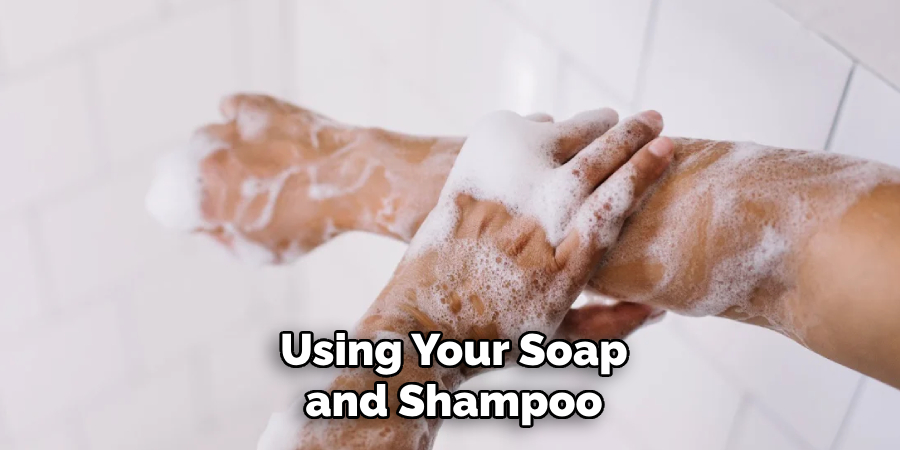
Step 8: Rinse Off
Using your cup or hands, pour water over yourself to rinse off all the soap and shampoo. Make sure there are no soapy residues left on your body or hair. Also, avoid getting water in your eyes. And if you’re using natural sources for water, avoid getting it in your mouth.
Step 9: Dry Off
Using a clean towel, dry yourself off. If you don’t have a towel, air drying is an option, but it may take longer. Make sure to dry between your toes and any other areas where moisture can get trapped. As an added tip, you can also use a small amount of hand sanitizer to freshen up if needed.
Step 10: Get Dressed
Put on your dry clothes and get dressed. If you have wet hair, it’s best to let it air dry or use a towel to pat away excess water. Avoid using a hairdryer as this requires electricity. Therefore, it’s a good idea to shower earlier in the day if you need your hair to be fully dry for an event or outing.
Step 11: Clean Up
Make sure to clean up your shower area and properly dispose of any wastewater. If using natural sources for water, make sure to follow Leave No Trace principles and avoid contaminating the environment. Also, don’t forget to dry out your bucket or container for future use.
Step 12: Be Prepared
Always be prepared for power outages by keeping a supply of water and necessary items on hand. You can also invest in a camping solar shower, which uses the heat from the sun to warm up water for a makeshift shower. Practice these steps at home or during camping trips to become more comfortable with showering without electricity.
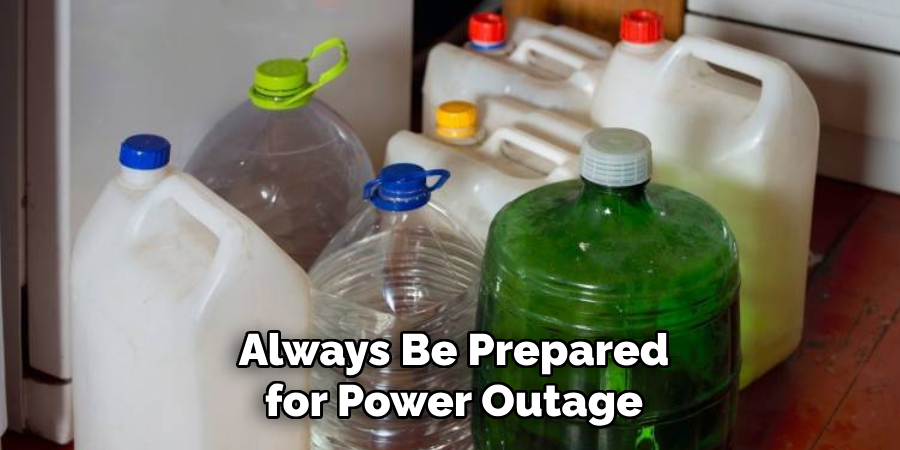
Showering without electricity doesn’t have to be a daunting task. By following these steps on how to shower without electricity and being prepared, you can still enjoy a refreshing shower even during power outages.
Remember, adaptability and creativity are key when it comes to living without modern conveniences. So don’t let an outage stop you from feeling clean and refreshed. Happy showering! Instead, let’s focus on resilience and adaptability in the face of challenges. With these tips, you can still enjoy a refreshing shower during unexpected power outages or while camping off the grid.
9 Safety Measures to Keep in Mind
While showering without electricity can be a manageable task, it’s important to keep these safety measures in mind to ensure a safe and successful experience:
1) Use Clean Water
Make sure the water you’re using is clean and safe for showering. If using natural sources, always purify the water first to avoid getting sick. Soaking in contaminated water can lead to skin infections or other health issues.
2) Watch Your Step
Be mindful of where you’re stepping, especially if you’re showering outside. Wet surfaces can be slippery, and cause falls or injuries. Some portable showers also come with a non-slip mat for added safety.
3) Protect Your Eyes and Mouth
Avoid getting water in your eyes or mouth, especially if using natural sources. This can lead to irritation or ingestion of harmful bacteria. Consider wearing swim goggles if you have them available.
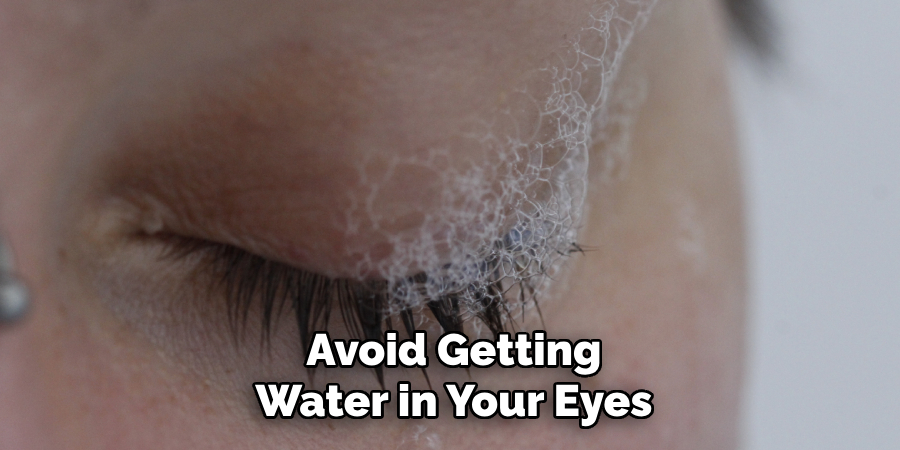
4) Be Cautious with Soap
If you’re using biodegradable soap, make sure to use it at least 200 feet away from any natural water sources to avoid contamination. Also, be mindful not to slip on any soapy residues while showering. And always rinse off the soap completely before getting out of the shower.
5) Don’t Overheat
Avoid using very hot water while showering, as this can lead to overheating and other health issues. If possible, use lukewarm or room-temperature water for a comfortable and safe experience. When using a solar shower, make sure to test the water temperature before use.
6) Avoid Electrical Equipment
As mentioned earlier, it’s best to avoid using hair dryers or other electrical equipment while showering without electricity. This can be dangerous and lead to electrocution or fire hazards. Very hot water can also damage your skin, so make sure to use caution when heating up water.
7) Be Prepared for Emergencies
Always have a plan in case of emergencies, such as sudden severe weather or injuries while showering. Make sure to keep communication devices nearby and have first aid supplies on hand. It’s always better to be safe than sorry.
8) Practice Leave No Trace Principles
If showering outdoors, make sure to follow Leave No Trace principles and properly dispose of any wastewater. This includes packing out soap and other personal hygiene products. Respect the environment and leave it as you found it.
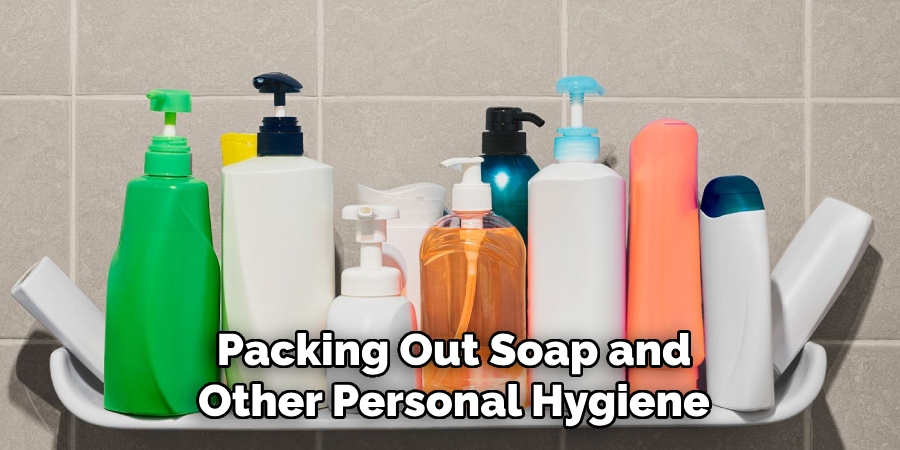
9) Stay Hydrated
While showering is important for hygiene, it’s also essential to stay hydrated. Make sure to have enough clean drinking water available, especially if you’re in a hot or humid climate. Consider using a portable water filter to purify any natural water sources for drinking purposes.
Showering without electricity may seem like a daunting task, but with some preparation and common sense, it can be a manageable and even enjoyable experience. Whether you’re facing a power outage or on a camping trip, these tips will help you stay clean and refreshed without relying on modern conveniences. Remember to prioritize safety, be mindful of the environment, and always have a plan in case of emergencies.
8 Things to Avoid
While you’re learning how to shower without electricity, here are some things to avoid for a successful experience:
1) Using Cold Water
Showering with cold water may seem like a refreshing idea, but it can actually be dangerous. Very cold water can shock your system and lead to hypothermia or other health issues. Always use lukewarm or room-temperature water for a safe and comfortable shower.
2) Showering in the Dark
Avoid showering in complete darkness, especially if you’re not familiar with your surroundings. Use natural light or bring a flashlight to ensure safety while showering. Soaking in the dark can also increase the risk of accidents or injuries.
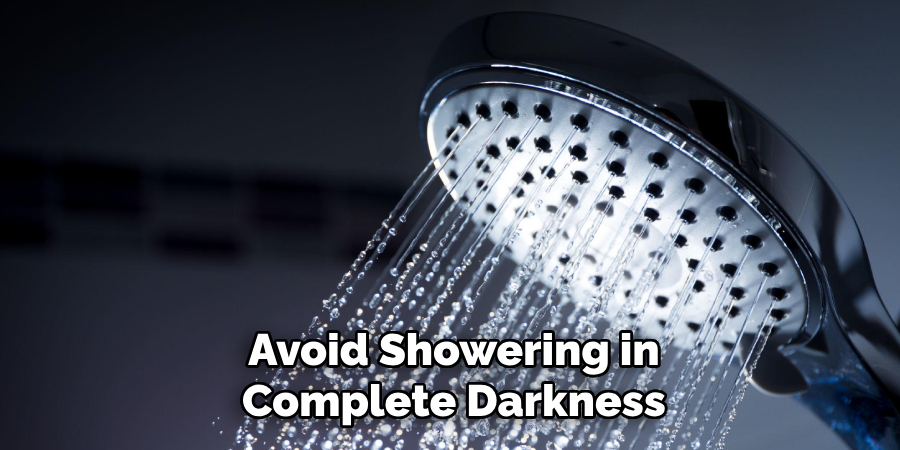
3) Using Unfamiliar Products
Stick to your normal hygiene routine while showering without electricity. Avoid using new or unfamiliar products that may cause skin irritation or other adverse reactions. Stick with trusted brands and products to avoid any unwanted surprises.
4) Not Drying Off Properly
Make sure to dry off completely after showering. Leaving dampness on your skin can lead to discomfort or even health issues. Pay extra attention to areas that are prone to chafing or irritation. As an alternative, you can use a microfiber towel that dries quickly and is easy to pack for camping trips.
5) Forgetting to Pack Essentials
Always double-check that you have all the necessary items before showering without electricity. This includes towels, soap, shampoo, and any other personal hygiene products you may need. Forgetting essentials can make your experience more challenging and uncomfortable.
6) Getting Distracted
It’s important to stay focused on the task at hand while showering without electricity. Avoid using your phone or getting distracted, as this can increase the risk of accidents or injuries. Use this time to relax and focus on taking care of yourself.
7) Using Too Much Water
Be mindful of how much water you’re using, especially if you have limited resources. Avoid wasting water unnecessarily, and consider using a low-flow showerhead if possible. This will help conserve water and make your supply last longer.
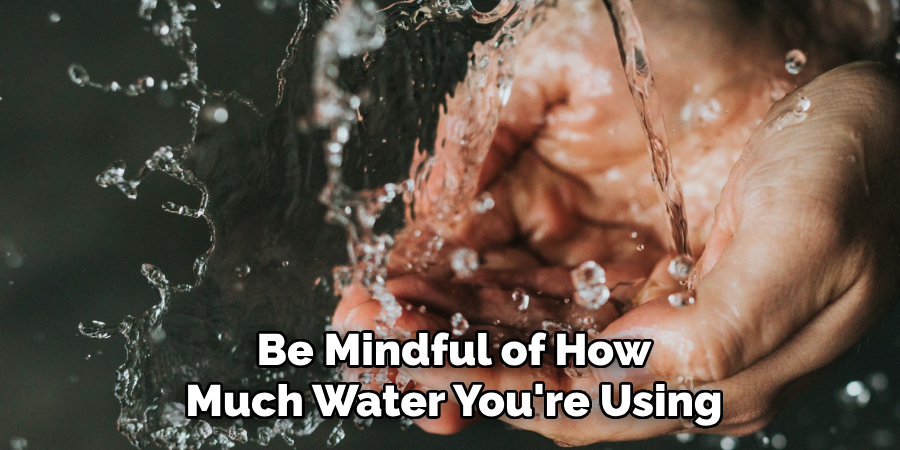
8) Neglecting Proper Hygiene
While it may be tempting to skip certain steps while showering without electricity, such as washing your hair or shaving, it’s important to maintain proper hygiene. Neglecting these habits can lead to discomfort or health issues in the long run. Make sure to take care of your body and prioritize cleanliness during this process.
In conclusion, showering without electricity is a practical skill that can come in handy in various situations. With some preparation and awareness, it can be a safe, sustainable, and enjoyable experience. Remember to prioritize safety, be mindful of the environment, and always have a plan in case of emergencies.
8 Additional Tips
Here are some additional tips to enhance your experience while showering without electricity:
1) Use Portable Showers
Investing in a portable camping shower can make the process of showering without electricity much easier. These are designed specifically for outdoor use and can also be used indoors if needed. They come with built-in pumps or gravity-fed designs that allow you to control water flow and temperature.
2) Try Dry Shampoo
Dry shampoo can be a lifesaver when you don’t have access to traditional showers. It absorbs excess oil and leaves your hair feeling fresh without the need for water. This is especially useful for camping or other outdoor activities.
3) Bring Biodegradable Soap
If showering outdoors, make sure to use biodegradable soap that won’t harm the environment. This is especially important for wilderness areas where traditional soaps can have negative impacts on natural ecosystems.
4) Get Creative with Water Sources
If you’re camping or out in nature, there may not be a designated shower area. Look for alternative water sources such as rivers, lakes, or even rainwater. Just make sure to follow Leave No Trace principles and properly dispose of wastewater.
5) Consider Using Wet Wipes
In a pinch, wet wipes can be a great alternative to traditional showers. They allow you to freshen up quickly and easily without the need for water. Keep some on hand for emergencies or for a quick refresh on camping trips.
6) Make a DIY Shower
If you have access to a bucket, rope, and a tarp or shower curtain, you can easily make a DIY shower. Hang the bucket from a tree branch or any other sturdy structure, fill it with water, and use the tarp or curtain for privacy while showering.
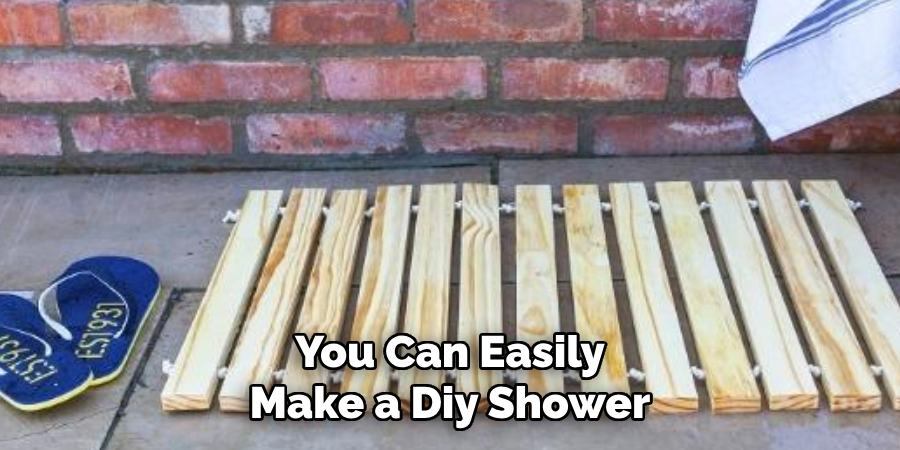
7) Don’t Forget to Brush Your Teeth
Maintaining oral hygiene is just as important as keeping clean. Make sure to pack a toothbrush, toothpaste, and dental floss for your shower without electricity.
8) Stay Mindful of Your Surroundings
Whether you’re camping or experiencing a power outage at home, always be aware of your surroundings while showering without electricity. Keep an eye out for potential hazards and have a plan in case of emergencies. Staying alert can help prevent accidents and ensure a safe showering experience.
With these tips in mind on how to shower without electricity, you can confidently face the challenge of showering without electricity. Remember to stay flexible, be prepared for unexpected situations, and, most importantly, enjoy the process.
Frequently Asked Questions
What Should I Do if I Run Out of Water While Showering Without Electricity?
If you have access to a nearby water source, such as a river or lake, you can quickly refill your supply. Otherwise, try to conserve the remaining water and prioritize cleaning essential areas. You can also use a small amount of water to dampen a washcloth and wipe yourself down instead of using the showerhead.
Can I Use Cold Water for Showering Without Electricity?
Yes, you can use cold water if that’s all you have available. However, if the weather is chilly or if you have access to warmer water, it may be more comfortable to use warm water.
How Can I Make Sure My Shower Without Electricity is Environmentally Friendly?
There are several ways to make your shower without electricity more environmentally friendly. These include using biodegradable soap, conserving water, and properly disposing of wastewater. It’s also important to follow Leave No Trace principles if you’re in a wilderness area.
Is It Safe to Shower Without Electricity During a Thunderstorm?
No, it’s not safe to shower without electricity during a thunderstorm. Water and metal plumbing can conduct electricity, putting you at risk of electric shock if lightning strikes the building or enters through your pipes. Wait until the storm has passed before showering without electricity.
Can Children Shower Without Electricity?
Children can also shower without electricity, but they may need adult supervision and assistance. Make sure to prioritize safety and follow proper hygiene practices for children as well.
What Should I Do if I Have a Disability or Mobility Issue?
If you have a disability or mobility issue, it’s important to plan ahead for your shower without electricity. Consider using tools such as portable showers with built-in seats or asking for assistance from a friend or family member. Make sure to prioritize safety and comfort during the process.
Conclusion
Showering without electricity may seem daunting initially, but with some preparation and awareness, it can be a manageable and sustainable experience. Prioritize safety, be mindful of the environment, and have a plan in case of emergencies. With these tips and tricks on how to shower without electricity, you can confidently tackle any situation where traditional showers are not available. Happy showering!
So remember to always prioritize safety, be mindful of the environment, and have a plan in case of emergencies. With these tips and tricks, you can confidently tackle any situation where traditional showers are not available.

